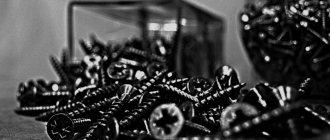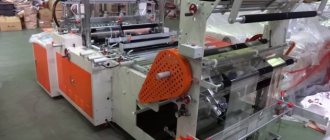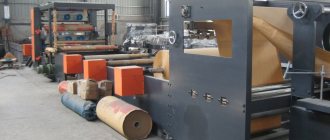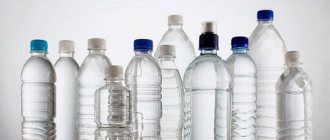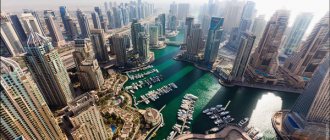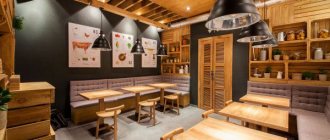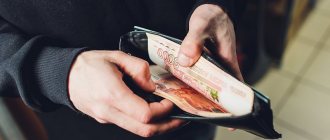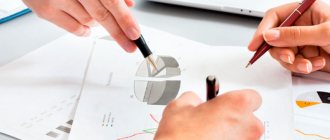Registration of activities
Every entrepreneur must formalize his activities to avoid problems with the law.
The most popular forms of doing business are individual entrepreneur (individual entrepreneur) and LLC (limited liability company). Depending on the type of management chosen, the process of registering an enterprise will differ:
- Individual entrepreneur. When opening an individual entrepreneur, you do not need to draw up constituent documents. You can do without a seal and authorized capital. To register, you need to provide: an application in form P21001, copies of all pages of the passport of a citizen of the Russian Federation, a receipt for payment of the state duty. The advantage of this type of registration is that it is very easy to close an individual entrepreneur; you just need to write an application to the tax authority, attaching a certificate from the pension fund. However, if the enterprise goes bankrupt, the owner of the individual entrepreneur must pay off the existing debts in full.
- Limited Liability Company. An LLC must have a charter, a seal, and an authorized capital of at least 10,000 rubles in money or property. For registration you will need: an application in form P11001, a decision of the founder (if there is one) or minutes of the meeting (if there are two or more), an agreement on the establishment of a company (for two or more founders), passports and identification numbers of all co-founders, the charter of the LLC, a guarantee a letter confirming the provision of a legal address, the consent of the owner upon registration to the home address, a receipt for payment of the state fee. Unlike an individual entrepreneur, the closure procedure for an LLC is more complex and lengthy (about 4-6 months). The advantage of this form is that the founders are liable for the organization’s debts only to the extent of their own share.
Applications must indicate OKVED - this is the digital value of the type of activity of the future enterprise. To open a workshop for the production of facades, you will need code 31.0 Furniture production.
Specifications
- MDF boards exist in the following thickness range: 6 to 38 mm.
- There are different sizes of MDF boards, it all depends on the manufacturer, standard sizes: 2800*2070 mm, 2620*2070 mm.
- density 700-870 kg/m. cube;
- There is laminated MDF board (the laminate is usually white on one side) and black MDF board (not laminated)
There are a lot of manufacturers and suppliers in Ukraine and the CIS countries, I would like to leave the choice of your future supplier up to you, but in the future I am ready to discuss the properties of MDF boards and manufacturers on our forum, and I will also prepare a new article on some of the manufacturers with whom we worked, are working or are going to work, their pros and cons.
Facade production technology
Depending on the material and appearance of the facade, the production technology will differ.
Made from wood materials
The basics of facades made of wood materials come in several types:
- Made from solid wood. As a rule, oak, pine, alder and other valuable tree species are used for such facades. They belong to the elite category and are most often made to order.
- Chipboard and MDF boards are the most common material, which is made from pressed wood chips and sawdust of different fractions. Their structure is quite resistant to moisture, hot steam and high temperatures.
Plates from the selected material are adjusted to the required size of the future facade. If necessary, a pattern can be applied using a milling machine, after which grinding and final processing occurs.
In order for the facade to look presentable, it is painted or varnished (more often in the case of facades made of solid wood), or lined with plastic or polymer film, and wood veneer is also used.
The application of facing plastic can be done using several technologies:
- Laminating;
- Lamination;
- Post-formation.
The main differences between these methods:
- when laminating, a lot of glue is used and it is done only on flat surfaces;
- lamination is carried out only using high temperatures;
- postforming is used for layered materials and is applied in an even layer to the surface, after which the texture is extruded using presses.
As a rule, furniture facades made of wood materials are used for the home, cottage or office, so they are the most common.
Made of metal
Metal facades are made from aluminum or stainless steel by bending sheet metal. After which it is ground and polished. If necessary, you can add wood and MDF inserts.
Such facades look quite presentable and, so far, are most often used in industrial premises. However, recently home kitchens with metal facades have been gaining popularity.
From glass
For glass furniture facades, sheet material with a thickness of 1.9-19 millimeters is used. After final processing, the glass can become:
- tinted;
- corrugated;
- covered with decorative film;
- with a pattern (applied using sandblasting);
- with full color printing;
- curved.
Glass fronts are most often used in TV stands, walls and cabinets for living rooms and bedrooms. Less often in kitchen furniture.
About the cost of production of facades in a nutshell
Before deciding to create your own production of furniture facades, you need to have a clear idea not only of one-time investments in equipment, but also understand what costs will be required to produce the products themselves.
This article provides only an approximate calculation of the cost of production of MDF film facades using Maxim thermo-vacuum and milling equipment. The authors do not claim completeness or accuracy of the economic research. This is more of a basic summary that will help beginners quickly understand the specifics of making furniture facades. In your region, prices and wage levels may differ from those used in this calculation. In addition, it should be taken into account that the article was written back in 2011. Therefore, you can calculate the order of profitability and payback time yourself, based on your own current figures.
This video will help beginners get an idea of the correct organization of the production process using the example of a real facade workshop:
Don't forget about taxes, rent of industrial premises and interest on loans and leasing. In addition, of course, there are consumables, such as circular saws, end mills, sanding sponges, etc. It should also be taken into account that these figures relate to the production of straight facades; the production of radius facades using bent-glued technology has its own characteristics and their cost slightly higher. In addition, the presses themselves for the production of curved facades with a lifting table are structurally more complex and more expensive than conventional ones. However, the retail price of curved facades is many times higher than the price of conventional ones, therefore the financial attractiveness of their production is higher.
Press for radius facades Maxim DIP RP-1414
So, the main items of variable costs of the cost of MDF film facades are as follows:
- MDF sheet 16 mm laminated one-sided 2800x2070mm 2100 rub. (5.8 sq. m -10% waste = 5.2 sq. m) – 400 rub. /sq. m The cost of facades can be significantly reduced by using conventional non-laminated MDF, the reverse side of which is laminated (lined with textured papers) using a Maxim DIP-2514 membrane-vacuum press to match the color of the PVC film on the front side of the facade. Both the most inexpensive finishing materials and more expensive materials impregnated with formaldehyde resins are used, which do not require final finishing. In addition, film facades, the reverse side of which is covered with a textured lamination to match the facade, are sold more expensive than usual ones with a white reverse side: MDF sheet 16 mm 2440 * 1830 mm 795 rub. (4.46 sq. m -10% waste = 4 sq. m) - 200 rub./sq. m MDF sheet 10 mm 2440*1830 mm 550 rub. (4.46 sq. m -10% waste = 4 sq. m) - 138 rub./sq. m
- Decorative matte PVC film - 60-65 RUR/sq. m (in December 2014 this was already 140-225 rubles/sq.m) Decorative gloss PVC film - 100-120 rubles/sq.m. m (in December 2014 this is already 260-390 rubles/sq.m - depending on the manufacturer and the effects of the film (3D effect, metallic, etc.) the price may be slightly higher, but the price of the facades increases proportionately ) One bookmark in a press with working table dimensions of 2500*1400 mm is 3.5 sq. m PVC film. The actual yield in a product from one tab is usually 1.7-2.2 sq. m. That is, per 1 sq. m of finished product is spent from 1.6 to 2.0 sq. m. m of decorative film Thus, the consumption for PVC film: Matte: 104-140 rub./sq. m Glossy: 160-240 rub./sq. m
- Glue 20-35 rub./sq. m
- Salary 70-100 (120) rub./sq.m. m (formatting and milling of MDF, applying glue, sanding, film covering)
- The electricity consumed by Maxim presses for the full cycle of heating and vacuuming in the cost structure of MDF furniture facades is actually not as significant as other factors - 0.1-0.6 kW/h * 3.00 rubles. = 0.30-1.80 rub./sq. m
The total cost per square meter of the finished product cannot exceed (in 2011 prices):
- Matte facades: 594-695 rub.
- Glossy facades: 650-795 rub. The cost of manufacturing per square meter of MDF door overlays is correspondingly lower, the actual yield of finished products is higher, as well as the production speed.
The actual productivity of the Maxim DIP-2514 thermal vacuum press when laminating kitchen sashes with decorative film can be 60-100 sq. m of finished MDF facades per shift.
The most popular press case for MDF facades Maxim DIP-2514 for MDF facades Maxim DIP-2514
When laminating door overlays with additions and cashing, the product yield will be even greater. One door trim with preparation and laying out is covered with film literally in a matter of seconds. That is why, in the production of MDF film overlays for steel doors, double-table membrane-vacuum presses are most effective.
Horizontal sliding double-table press for facades Maxim ST-2514
Average wholesale prices for facades in the European part of Russia:
- Matte facades: 1300 rub.
- Glossy facades: 1750 rub.
Thus, with a full load of a hot vacuum press per shift, you can get a profit (excluding overhead costs) of no less than:
For one shift:
- Matte facades: from (1300 – 695) 60 sq. m = 36,300 rub. up to (1300 - 594) 100 sq. m = 70,600 rub.
- Glossy facades: from (1750 – 795) 60 sq. m = 57,300 rub. up to (1750 – 650) 100 sq. m = 111,000 rub.
For a month (22 working days):
- Matte facades: 798,600 – 1,553,200 rub.
- Glossy facades: 1,260,600 – 2,442,000 rub.
Prices for decorative film, MDF, and glue have certainly increased significantly over the past years, however, the retail and wholesale cost of finished furniture facades lined with PVC film has also increased. Therefore, facade production remains an equally profitable and attractive activity.
Basic recommendations for areas for organizing the production of MDF film facades.
To organize the production of MDF film facades, it is necessary to separate the area for applying glue, drying, sanding and pressing the facades from the area where the facades are formatted and milled, in such a way as to completely prevent dust from entering the air. The quality of the lined surface of the facade depends on this. To speed up production, it is also extremely important to organize the fast and convenient supply of workpieces from one zone to the next.
Minimum recommended area of production sites by technological zones:
The production of furniture facades takes place in several technological stages using various equipment, so it should be understood that it is difficult to competently organize such production on an area of less than 110-120 sq.m. and it is unlikely to be effective. Do not forget that well-thought-out internal logistics reduces time costs and increases the overall productivity of the workshop. Therefore, the sections should be located as close to each other as possible in accordance with the technological chain.
1. Area for formatting blanks (format cutting machine) – 7x4m (28 sq. m) 2. Milling area (copy milling machine - 3x3m) + (cleaning tables – 5x5m) = (25 sq. m)
The copy router, simple in design, provides a decent speed for milling the panel according to the template.
Tables for cleaning blanks of MDF facades before applying glue.
3. Glue application area – 3x3m, preferably 4x4m (16 sq.m.)
Chamber with a rotary table for applying glue to workpieces.
4. Drying area for workpieces – 2x2m, preferably 4x4m (16 sq.m) 5. Lamination (pressing) area – 7x3m, it is advisable to have two cutting tables in this area (finishing, removing shagreen, blowing with compressed air) 7x4m (28 sq.m )
Selection of premises
The production premises must necessarily meet business requirements and have:
- good transport connections;
- network for supplying water and electricity;
- excellent ventilation.
For small production sizes, a room measuring 100-150 square meters is suitable.
The greatest demands are placed on the pressing shop; the temperature there should not be lower than 15 degrees and a complete absence of dust is required.
If we consider advertisements for the rental of industrial premises using Moscow as an example, then for a workshop measuring from 100 to 150 square meters in different parts of Moscow they will charge you from 40 to 70 thousand rubles per month.
Assembly
After all the elements are prepared for further work, you need to assemble the product. The technology for making facades from solid wood is quite simple; along the perimeter of the frame there are special grooves into which you need to insert a panel or other material. Customers often choose bars or glass; stained glass will also look beautiful. Nowadays it is popular to use facades created like blinds, since this allows you to create an optimal exchange of air flows in the closet.
Each element of the product is fastened to each other. The surface must be smooth, so it is sanded using special grinding machines for making solid wood facades . The penultimate stage is coating the wood with varnish, which can protect the material from the negative effects of external factors. You can also do other processing using a facade painting machine . If you need to make loops in the product, then this step should be carried out last.
Purchase of equipment for production
To equip a production room, depending on what kind of facades you plan to produce, you may need the following machines:
| Equipment name | Approximate price (rubles) |
| Slitting machine | 250000 |
| Vacuum press | 300000 |
| CNC machine (milling) | 300000 |
| Painting post with dry filtration | 100000 |
| Grinder | 5000 |
| Spray gun for painting facades made of wood and MDF | 3000 |
| Compressor | 6500 |
| Industrial vacuum cleaner | 15000 |
Prices may vary depending on the make and model of equipment. We advise you to immediately purchase high-quality equipment in order to avoid unnecessary costs for its repair or replacement during the work process.
You will also need consumables for this equipment, which will also cost about 200,000-300,000 rubles. Also, its delivery and installation will cost approximately 100,000-150,000 rubles, depending on the region.
Selection of equipment for the production of MDF facades
The practice of using modern equipment in furniture production allows us to evaluate the benefits of certain types of machines for processing MDF boards.
An enterprise engaged in deep processing of timber cannot do without multi-saw edgers, which are used for high-performance cutting of solid wood. Their use involves partial or complete automation of the production line, and the equipment performance is selected in accordance with the expected load level.
Cross cutting machines
Designed for high-precision cutting of sheet raw materials for furniture production lengthwise and crosswise. When cutting on such equipment, the workpieces are obtained with an accurate, clear shape with perfectly straight ends, and there are no wood defects.
Calibrating and grinding machines
An obligatory stage in the manufacture of any products made of wood and pressed materials (chipboard, MDF boards) is calibration and grinding of the surface. A calibrating grinding machine allows you to perform this operation with high productivity, eliminating surface defects and giving the product an attractive appearance.
Vacuum press
Lining MDF and chipboard boards with natural veneer and laminating with PVC film are carried out using a vacuum press. Modern equipment ensures high quality cladding.
Spray booth
Modern paint booths with active floors prevent paint splashing and solvent vapors from penetrating beyond the water curtain.
Sales market
The sales market for furniture production products is quite extensive. You can sell facades directly to consumers, or offer your products to furniture stores, repair and construction organizations.
In conclusion, it is worth noting that opening a workshop for the production of furniture facades is a highly profitable (profitability of about 25-30%) and quick payback (payback within 6-10 months) business. At the same time, the investment in it is not that big. To open, you will initially need about 2.5 million rubles. We recommend looking at existing manufacturers of furniture facades and conducting competitive intelligence.
02.03.2020

